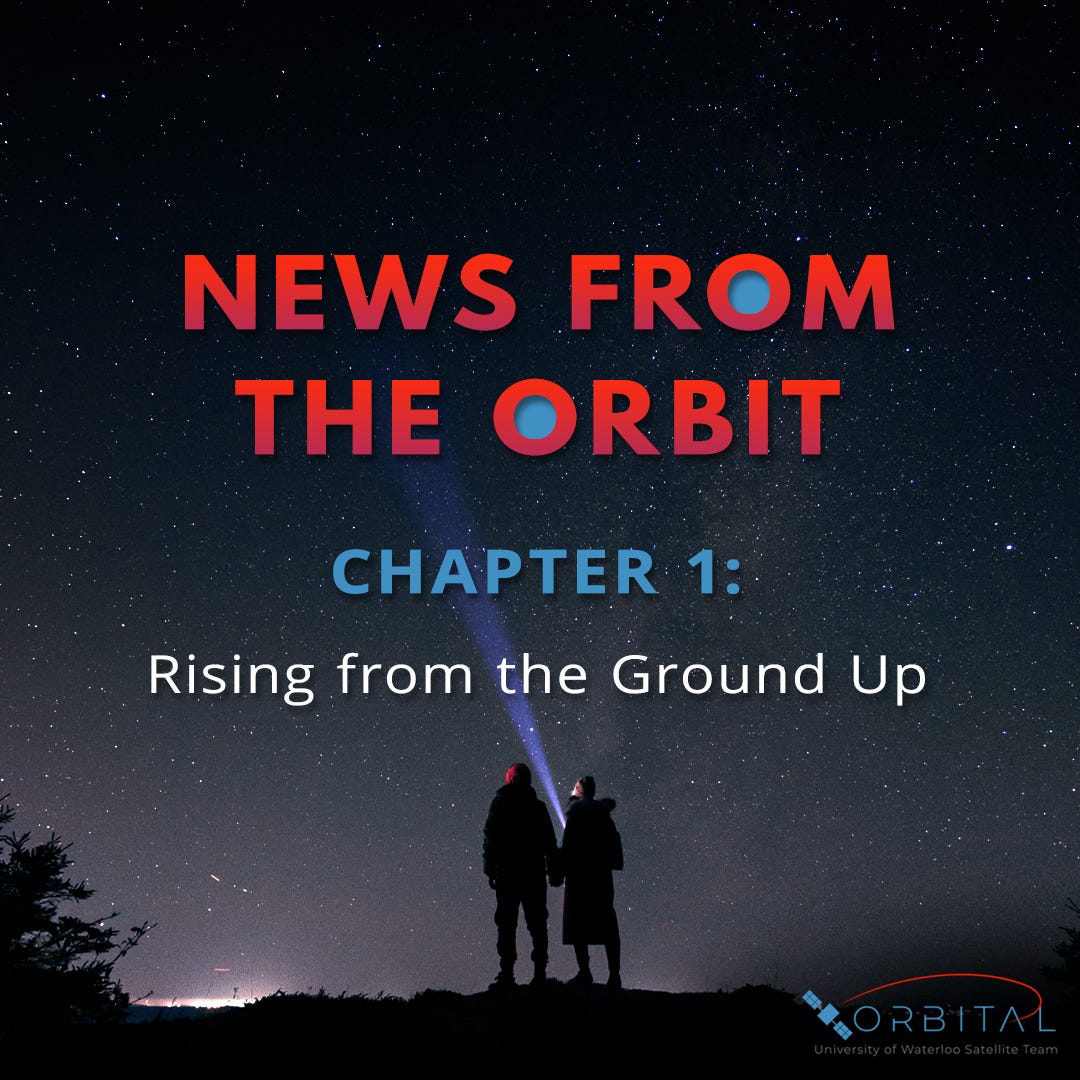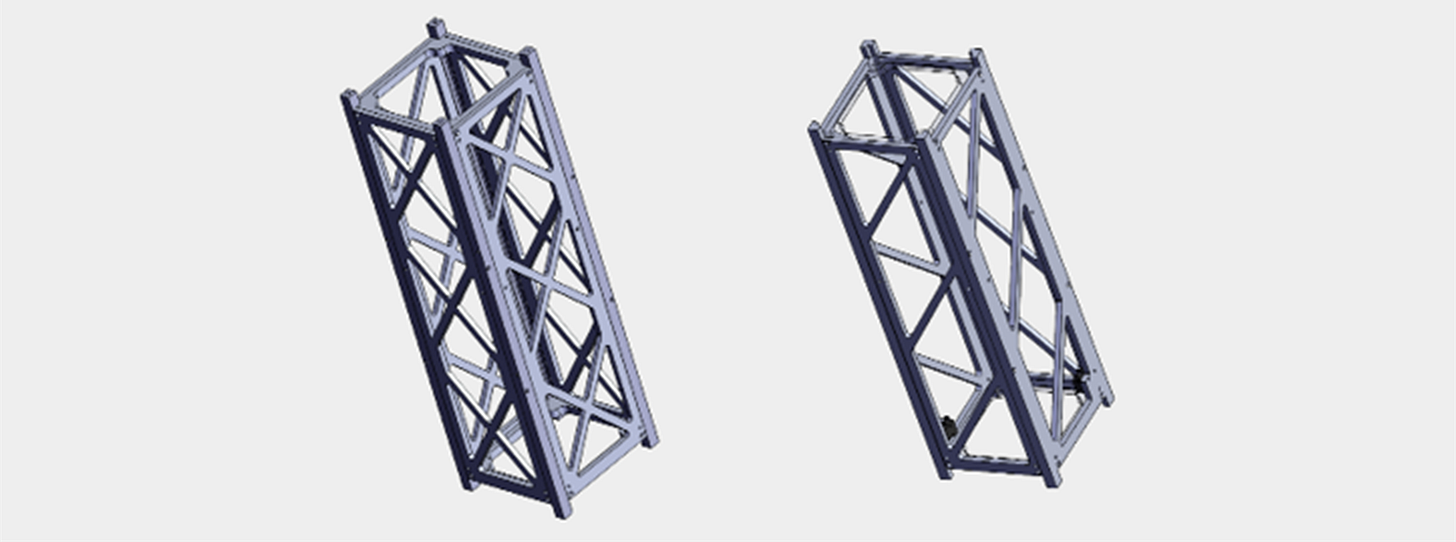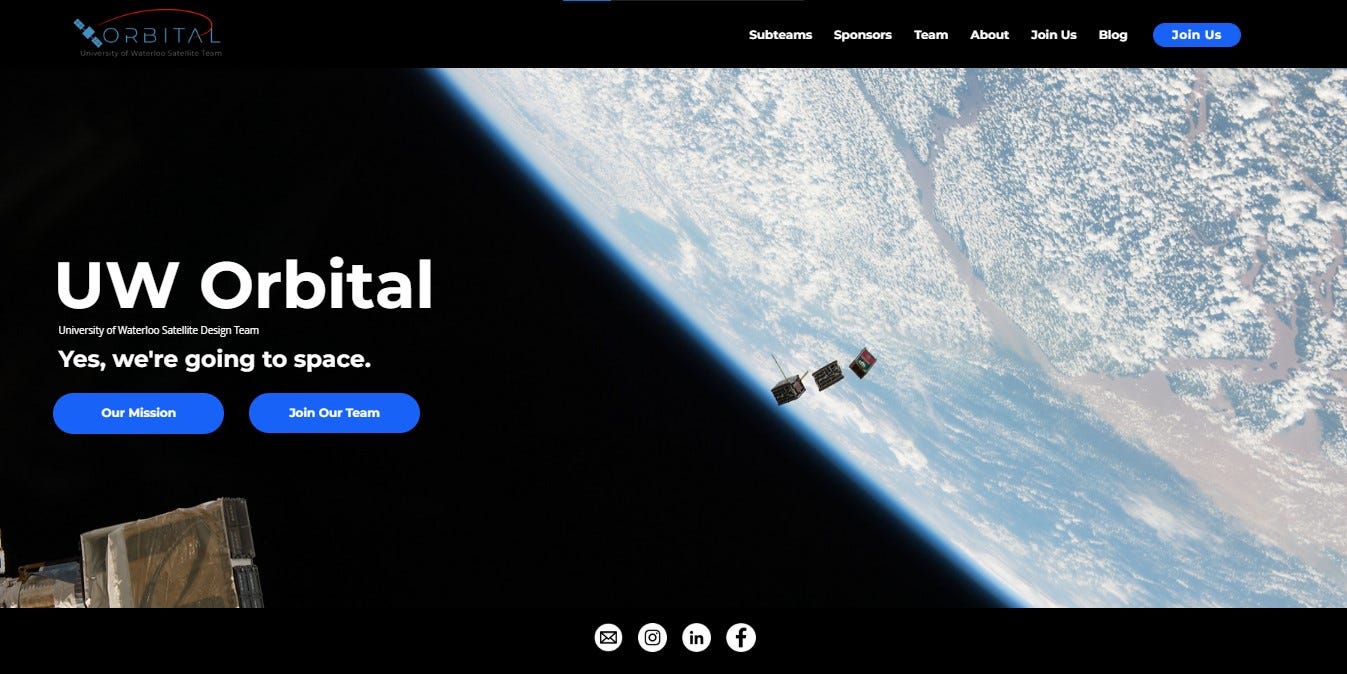Chapter One: Rising from the Ground Up
7.3 min read
During the early stages of this project, the members spent countless days working towards their goals and simultaneously building their respective teams as well as group culture and spirit to motivate one another. Here are all the subteams that make up UW Orbital and all that we have accomplished in the past year:
Electrical Power Systems (EPS)
Command & Data Handling (CDH)
Communications
Attitude Determination and Control System (ADCS)
Mechanical
Payload
Business
Orbital in the Past Year
Since the competition officially commenced in the fall of 2021, the team has come a long way. From forming meaningful connections, planning the project, and slowly building their experience through their interactions, one half of the competition has already come to an end. Here is what the subteams have accomplished so far.
The Electrical Power Systems (EPS) subteam is responsible for power production, storage, and distribution across the satellite. The power, which is produced through solar panels, is stored in 18650 Lithium-ion batteries. Since the EPS is also responsible for the power supply lines to every part of the CubeSat, such as the onboard computer, transceiver, payloads, Attitude Determination and Control Systems (ADCS) sensors and actuators, all components of the EPS will be designed in-house for this competition.
In the past few months, the EPS subteam has hit several important milestones:
Firstly, for power production, the team has successfully designed solar panel boards which are nearly ready for fabrication. Furthermore, they have finalized the design for the power distribution system which included assembly and thorough testing of power converter boards to produce stable 5V, 3.3V, and 8V rails that will be the primary source of power for all the other subsystems on the satellite. In addition, they have also developed the load switch circuitry to control the rails and turn them on and off when needed. The EPS subteam has also settled on a Maximum Power Point Tracking architecture to optimally track and produce the most amount of power from the solar panels and has subsequently designed and assembled the MPPT board and its algorithm to manage the system.
Current work in progress is to complete the design of the battery management system board, which will then be sent out for review and fabrication subsequently. After it returns, testing ensues followed by integration of all the breakout boards together in order to build a functioning EPS system. After that, designing the first revision of the EPS board to be used on the satellite will take place.
The Command and Data Handling (CDH) subteam has two primary projects: hardware design, assembly, and testing of the onboard computer (OBC). Subtasks for the OBC include designing the printed circuit board (PCB), selection and assembly of components and testing of the electrical characteristics of the OBC. The team also overlooks software integration, which includes generating the OBC operating system (OS) and managing other teams' applications, through FreeRTOS task scheduling, APIs for other subteam applications to run on the OBC, and interface design for communication between applications.
At first it may seem a lot of work, but the CDH team has come far!
The first revision of the OBC design has been completed and the overall team software organization and architecture has been finalized. Moreover, the development and testing phases of the software development toolchain have been concluded. The software development toolchain is a crucial part because a great deal of work for software development is setting up an environment and identifying what tools to use and how to integrate them into the workflow. The CDH subteam has completed this so that the rest of the team can focus on writing code and developing features.
Some next steps for the CDH team are to design and define a software interface that enables communication between the submodules and the main operating system as well as implement a functional prototype of the OS onto the OBC.
Speaking of communications, the Communications team is responsible for developing an ultra-high frequency (UHF) radio system to send telemetry (which are recordings and transmissions of the readings of an instrument, in this case, the satellite) from the CubeSat to the ground station, as well as send image data to amateur radio operators (ARO) and receive commands from the Mission Control Centre (MCC). This involves building an in-house onboard transceiver board, selecting an appropriate onboard antenna, and building a ground station prototype.
Some of the communications team’s biggest wins in the past year are the successful development of a functional evaluation board for the CC1120 chip upon which the onboard transceiver is based, design and development of an RF frontend board for amplification and filtering for the onboard transceiver, and major progress on the development of a custom firmware driver for the CC1120 chip. The team’s latest achievement is the fruitful transmission of a message from the transceiver prototype to the ground station prototype.
Ever wondered how a satellite knows where in space it is floating? The position and orientation of a satellite is controlled by the Attitude Determination and Control Systems (ADCS). This is a vital part of the project since other subsystems rely on the spacecraft orientation to work, such as communication, solar panels, and cameras.
To do this, external reference points are measured through the use of sensors. Sensors used in a CubeSat are star trackers, magnetometers, sun sensors, GPS, horizon or earth sensors, and gyroscopes. After implementing an algorithm, the sensors' input is used to calculate the spacecraft's location and orientation. Once its orientation is known, actuators maneuver the spacecraft according to parameters required by the mission. Actuators take advantage of their environment and the laws of physics to orient the spacecraft as desired.
The ADCS subteam saw great successes much like the rest of the teams.
They designed their own in-house magnetorquer and magnetorquer assembly equipment. A magnetorquer is a satellite system for attitude control built from electromagnetic coils creating a magnetic field around a satellite, which interacts with the Earth’s magnetic field producing a torque as a counterforce. Additionally, the team created a Simulink program to simulate the satellite’s momentum dumping, which is the application of an external torque, and also developed and programmed an algorithm to control satellite attitude
Since the magnetorquers are made in-house, the process of hand-winding magnetorquers is time consuming and prone to mistakes. The created magnetorquers are uneven and not as efficient as they can be. Thus, the magnetorquers need a winding mechanism to automate the assembly process, ensuring consistent output and efficient magnetorquer performance. Currently, assembly on the magnetorquer manufacturing equipment is ongoing, after that will follow implementation and usage of the winding mechanism in order to assemble the magnetorquers.
Moving on to the form of the satellite itself, the Mechanical subteam works on the overall satellite structure as well as any internal architecture that is required and correspondingly do Finite Element Analysis and Thermal theory. 3D CAD design and software-simulated analysis are used to run primary tests and later stages involve more physical methods of testing.
The subteam has so far designed two CubeSat Model Iterations, 3D printed one of them, designed a mechanism that interfaces with deployment switches, performed structural simulations that led to the inclusion of inner brackets and uni-body side panel design, and performed first thermal simulations providing information on the chassis through orbit.
This concludes the first round of thermal and structural simulations as well as the completion of the second iteration of the chassis. In addition, the preparation of machining drawings for the structure has begun and the team is looking forward to machining parts of the chassis using the waterjet and CNC mill within the next few months.
For this competition, the Payload subsystem is responsible for the two payloads – the Primary SelfieSat camera, and the secondary laser beacon for QEYnet with whom Orbital has partnered with. The SelfieSat camera will take an image on request from the amateur radio operators, while the secondary payload is a custom beacon from QEYnet to assess their method of quantum key distribution.
In the past months, the payload subteam has selected a secondary payload mission apart from the first payload mission which is a requirement for the CSDC. They have selected and ordered a secondary payload camera. The team's next aim is to select a laser for a ground beacon according to the secondary payload mission, which is to point it towards the laser with an accuracy of 0.1 degrees during an eclipse, which means there will be no dependency on the sun sensor in orienting the satellite. As for the primary payload camera, the team is targeting to create a software to accomplish the primary payload mission of capturing a picture of a given location while maintaining communication between the ARO and MCC.
Lastly, the Business subteam oversees various tasks such as building long-lasting external relationships which may lead to potential sponsorships, unexpected opportunities, and a growing reputation for Orbital; handling all the finances that is going into this project; directing events and merch logistics to build team spirit and a more engaging work culture; and to marketing the whole project efficiently whether it is through in-person visits in colleges and high school or promoting through social media.
The team members handling the external relations recruited 2 academic advisors as well as a PhD student to provide guidance to UW Orbital through their expertise, conducted outreach and research to determine the secondary payload and connected with potential launch providers.
Similarly, the business team handling finances has achieved several victories which continues to motivate the entire team of Orbital to strive harder toward what they have gathered together for. Some achievements include receiving the immense support of the Dean of Engineering, Waterloo Engineering Foundation (WEEF), Math Endowment Fund (MEF), and the Engineering Society along with the Rising Youth and IEEE Canadian Foundation grants. With the support of twenty-six people on Orbital’s Kickstarter, Orbital has also accumulated over $1400.
The events and merch team members successfully hosted a fireside chat with the first woman commander for NASA's HI-SEAS mission, Martha Lenio with over 40+ people in attendance, hosted a fireside chat with Sohrab Haghighat the CEO of SpaceRyde, a satellite taxi company with over 30+ people in attendance and coordinated their first resume critique online last term in collaboration with EngSoc with over 170+ people in attendance! They have also secured a sponsorship with SpeedPro Canada for stickers, created pin button merchandise, and delivered the first round of merchandise to team members and sponsors!
Lastly, the marketing members created a comprehensive and elegant UW Orbital Website that has 280+ site sessions and approximately 190 unique visitors over the past 30 days. They have also achieved almost 200 followers on UW Orbital’s Instagram and have reached around 200+ accounts with our posts and stories as well as have over 150 connections on the UW Orbital LinkedIn with over 30 employees.
In the near future, the business subteam aims to reach out to 20 local companies in a variety of industries in hopes of obtaining a monetary sponsorship which could be put toward the construction of the satellite; improve the Kickstarter campaign to raise more money in the upcoming fall term, secure donors before launch, upgrade awards by partnering up with local companies, and enhancing overall marketing tactics; plan and design the team's banners, gather the team's merchandise design ideas to finalize the design for our next round of merchandise; plan 4 main events this term some of which are organizing a resume critique event with Waterloop, a team dinner and social, a fireside chat with an astronaut candidate, and an end-of-term movie night; and finally start introducing Orbital team members through socials and update the website to introduce sponsors and promote the team culture.
This was News from the Orbit – now signing off!
Connect with us on LinkedIn and Instagram and check out our UW Orbital site.
Interested in keeping up with UW Orbital? Subscribe below if you haven’t already!








